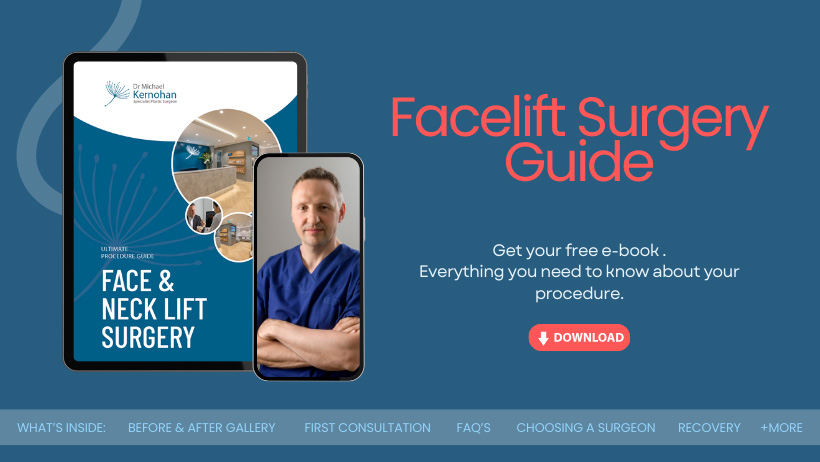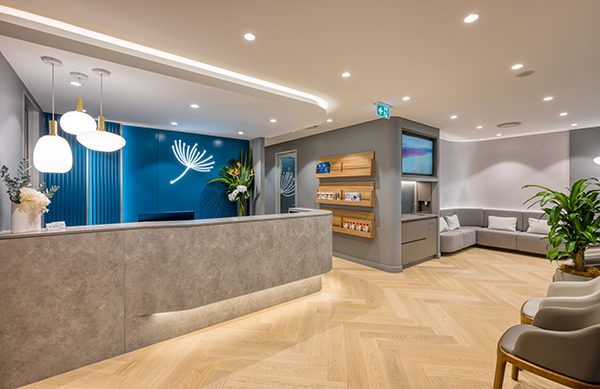What is The Golden Ratio?
Facial beauty has been a subject of interest for many people throughout history. Beauty is often defined as a combination of qualities that pleases the senses, especially the sight. While beauty standards vary across cultures, certain features are widely considered aesthetically appealing. The Golden Ratio is a mathematical concept that has been used to define beauty for centuries, and it is believed to be a key factor in determining facial beauty. In this blog post, we will explore the concept of the Golden Ratio and its relevance to facial beauty.
Specialist plastic surgeon Dr Michael Kernohan has decades of experience in providing both surgical and non-surgical procedures that can help patients achieve optimal results.
Take the Quiz
What Is The Golden Ratio?
The Golden Ratio is a mathematical concept that describes the ratio between two proportions. It is often represented by the number 1.618 and is also known as the Divine Proportion or the Golden Mean. This ratio has been used throughout history in art, architecture, and design to create aesthetically pleasing proportions.
The Golden Ratio and Facial Beauty
The Golden Ratio of Facial Aesthetics, also known as the Phi Ratio, is a mathematical proportion that is believed to define beauty in the human face. The Phi Ratio is a proportion of 1.618 to 1, which is also known as the Golden Ratio. It is used to describe the ideal relationship between different parts of the face and has been studied extensively by scientists and artists alike.
When applied to the face, the Phi Ratio can be used to determine aesthetically pleasing proportions of various facial features, such as the width of the eyes, the distance between the eyes, the length of the nose, and the width of the mouth. The right proportion is believed to be when the ratio of the width of a facial feature to the distance between that feature and another part of the face is approximately 1.618 to 1.
For example, the distance between the eyes should be approximately 1.618 times the width of one eye, and the distance between the eyes and the mouth should be approximately 1.618 times the width of the mouth. The length of the nose should be approximately 1.618 times the width of the nose at its base.
While the Phi Ratio has been used to define beauty in the human face for centuries, it is important to remember that beauty is subjective and that there is no one-size-fits-all definition of beauty. The Phi Ratio is just one tool that can be used to determine proportions, and what is considered aesthetically pleasing varies across cultures and individuals.
The Golden Ratio Is a Guideline Rather Than an Absolute Standard
The Golden Ratio is not an absolute standard, but rather a guideline or tool that can be used to determine facial proportions. While the Golden Ratio is a mathematically defined concept, it is important to recognise that beauty is subjective and can vary across cultures and individuals.
For example, some cultures may value larger or smaller eyes, fuller lips, or a more prominent chin, which may not necessarily conform to the proportions suggested by the Golden Ratio. Additionally, individual preferences and personal desires can also play a role in how one perceives facial beauty.
Therefore, while the Golden Ratio can be a useful tool in facial aesthetics, it should not be seen as the only or ultimate standard of beauty. Instead, it should be used in conjunction with other factors, such as individual facial features, age, skin quality, and overall facial balance and harmony, to determine the right approach to facial cosmetic procedures.
Click to Download Dr Michael Kernohan’s Facelift Guide

Features That Contribute to a Aesthetically Pleasing Face
There are many facial features that contribute to an aesthetically pleasing face, and what is considered desirable can vary depending on cultural and personal preferences. However, here are some common facial features that are often associated with beauty:
- Symmetry: Symmetry is often associated with beauty and is believed to indicate good health and genetic fitness. A symmetrical face is generally favoured over an asymmetrical face.
- Proportion: Proportion refers to the relationship between facial features, and pleasing facial proportions are often based on the Golden Ratio. However, it’s important to remember that individual facial features should also be taken into account and that beauty is subjective.
- Clear skin: Clear, blemish free skin is often associated with youth and health.
- Bright, expressive eyes: Bright, expressive eyes are often desirable and can convey warmth and openness
- Full lips: Full, shapely lips are often considered aesthetically desirable and can impact the overall appearance of the face.
- Defined jawline: A well-defined jawline can help to create a more contoured and balanced facial appearance.
- Straight, proportional nose: A straight and proportional nose that complements other facial features is often part of what is concidered desireable when it comes to facial aesthetics.
Is It Possible to Achieve Golden Ratio with Cosmetic Procedures?
If you are interested in achieving the Golden Ratio in your facial proportions through cosmetic procedures, there are several options to consider. However, it’s important to keep in mind that the Golden Ratio is a guideline and not an absolute standard, and that individual features and facial harmony should also be taken into account.
Some cosmetic procedures that may help achieve facial balance and symmetry according to the Golden Ratio include:
Face and chin
- Chin augmentation: Chin augmentation can alter the shape and size of the chin to create a more defined and balanced facial profile. This can help to achieve a more harmonious relationship between the nose, chin, and other facial features.
- Facelift: A facelift can address excess skin and increase jawline definition and neck contour, altering overall facial proportions.
- Buccal fat removal: Buccal fat removal can help to reduce fullness in the cheeks, creating a more defined facial contour that is often associated with the Golden Ratio.
- Wrinkle and Volumising Treatments: wrinkle or volumising treatments can be used to alter facial features, such as the lips or cheeks, to achieve the desired proportions. They can also help to reduce the appearance of wrinkles and fine lines.
Eyes
- Blepharoplasty (eyelid surgery): Blepharoplasty can be used to remove excess skin and fat from the upper and lower eyelids, which can reduce the appearance of excess skin or puffy eyes
- Brow lift: A brow lift can be used to lift eyebrows and reduce the appearance of forehead wrinkles
- Canthoplasty: Canthoplasty is a surgical procedure that can be used to reposition the outer corner of the eyes. This can help to create a more open and almond-shaped appearance
- Volumising Treatment: Volumising treatments can increase the volume under-eye area or reduce the appearance of wrinkles and fine lines around the eyes
Nose
- Rhinoplasty (nose surgery): Rhinoplasty is a surgical procedure that can be used to alter the size, shape, or position of the nose. By reshaping the nose, your surgeon can help to create a more balanced and harmonious appearance.
- Septoplasty: Septoplasty is a surgical procedure that can be used to alleviate the symptoms of a deviated septum, which can increase both the function and appearance of the nose.
- Non-surgical nose surgery: Non-surgical nose surgery, also known as liquid rhinoplasty, involves the use of volumising treatments to reshape and contour the nose.
FAQs about Facial Beauty and Golden Ratio
What are some common cosmetic procedures used to increase facial aesthetics?
- Rhinoplasty (nose surgery): Rhinoplasty can be used to reshape and resize the nose, increasing facial balance and harmony
- Facelift: A facelift can reduce excess skin and increase jawline definition and neck contour
- Blepharoplasty (eyelid surgery): Blepharoplasty can be used to remove excess skin and fat from the eyelids
- Chin augmentation: Chin augmentation can alter the shape and size of the chin
- Lip augmentation: Lip augmentation can be used to increase the fullness and shape of the lips
What role do genetics play in facial beauty?
- Genetics can play a significant role in facial beauty, as they determine factors such as facial bone structure, skin tone, and hair colour. For example, the shape of the face, size of the nose, and the distance between the eyes are all influenced by genetics.
- Skin texture, pigmentation, and propensity to ageing are also largely determined by genetics.
- However, it’s important to remember that genetics are only one aspect of facial beauty.
- Environmental factors such as sun exposure, lifestyle habits such as smoking, and skincare routine can also have a significant impact on facial appearance.
- Personal style and expression also play a role in how one’s facial features are perceived.
Can the Golden Ratio be applied to all ethnicities and facial types?
- The Golden Ratio can be applied to all ethnicities and facial types, but it’s important to remember that individual facial features and characteristics should also be taken into account.
- Facial proportions that conform to the Golden Ratio are often seen as aesthetically pleasing, but beauty standards can vary across cultures and individuals.
- It’s also important to remember that individuality and personal expression are key components and that what is considered beautiful is largely subjective.
- Different ethnicities can also have unique facial characteristics that may not conform to the Golden Ratio, but can still be considered aesthetically pleasing.
- It’s important to work with a qualified and experienced plastic surgeon to determine the best approach to achieving your desired facial aesthetics while taking into account your unique facial features, individual goals, and cultural background.
Can the Golden Ratio be used to determine which facial features are more desirable than others?
- The Golden Ratio is a useful guideline in determining facial proportions, but it’s important to remember that beauty is subjective and can vary across cultures and individuals. The Golden Ratio should be used as a guide, rather than an absolute standard.
Further Reading about Facial Surgery
- Read Dr Kernohan’s Facelift Surgery Page
- Read Dr Kernohan’s Chin Surgery Page
- Read Dr Kernohan’s Blog about How to make your nose Smaller
- Read Dr Kernohan’s Blog about What Makes an Attractive Jaw Profile?
- Read Dr Kernohan’s Blog about Broken Nose Surgery – Break Your Nose?
Medical References about Face Surgery
- Face-lift – Mayo Clinic
- Cosmetic surgery – Mayo Clinic
- Facelift: What to expect and possible complications – Medical News Today
- Facial Chin Augmentation – NCBI
- Current concepts in lip augmentation – NCBI






